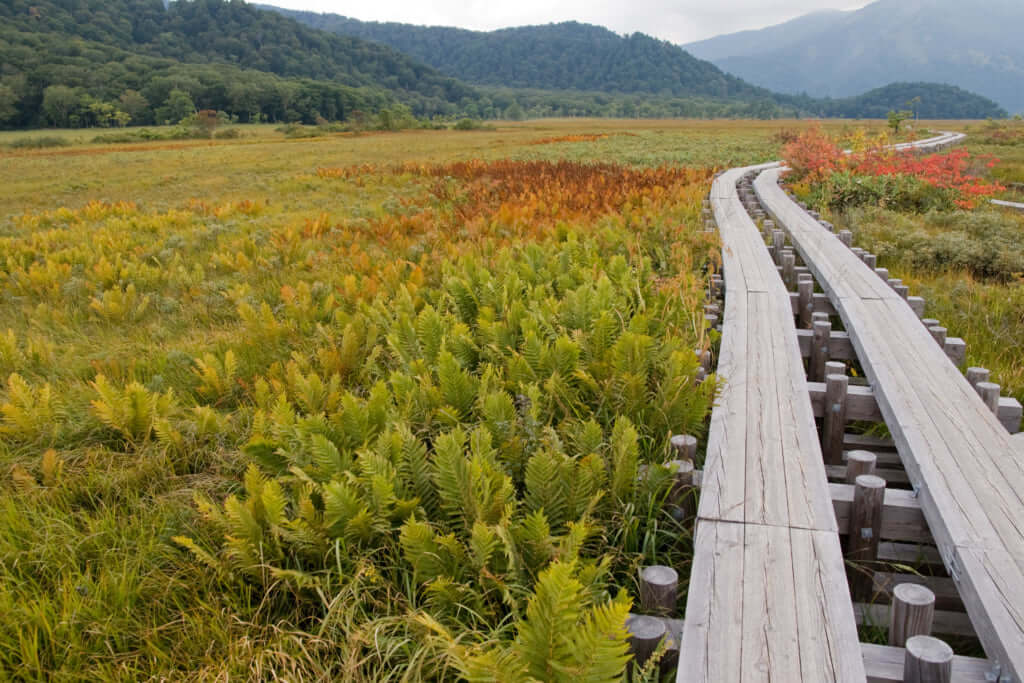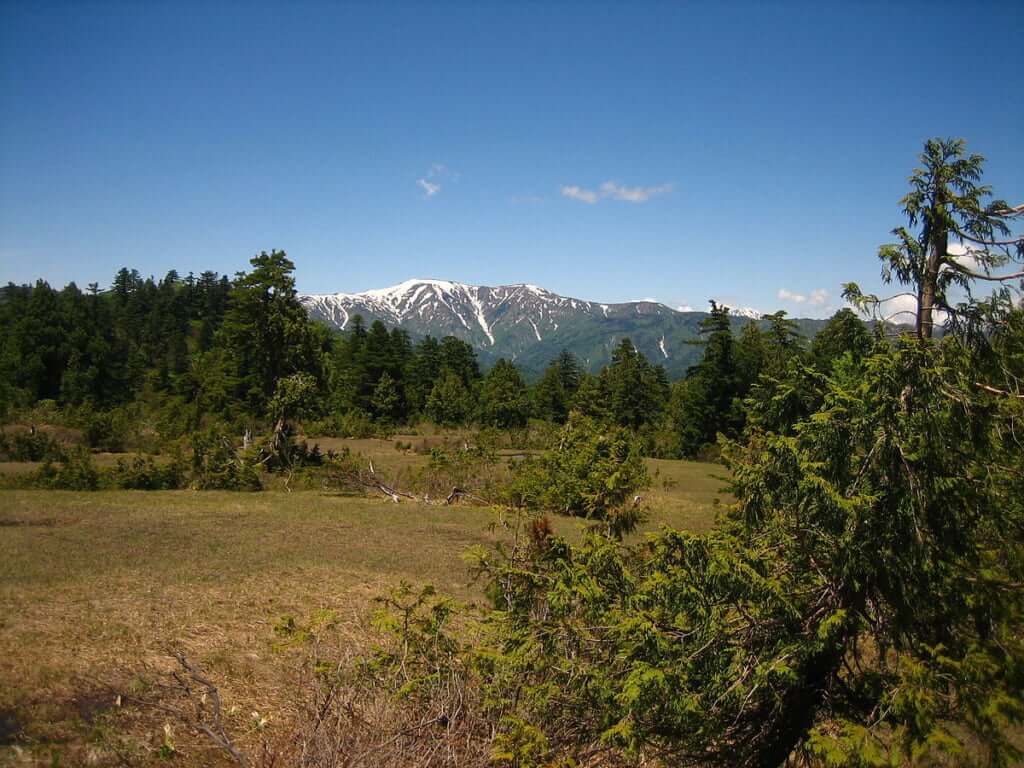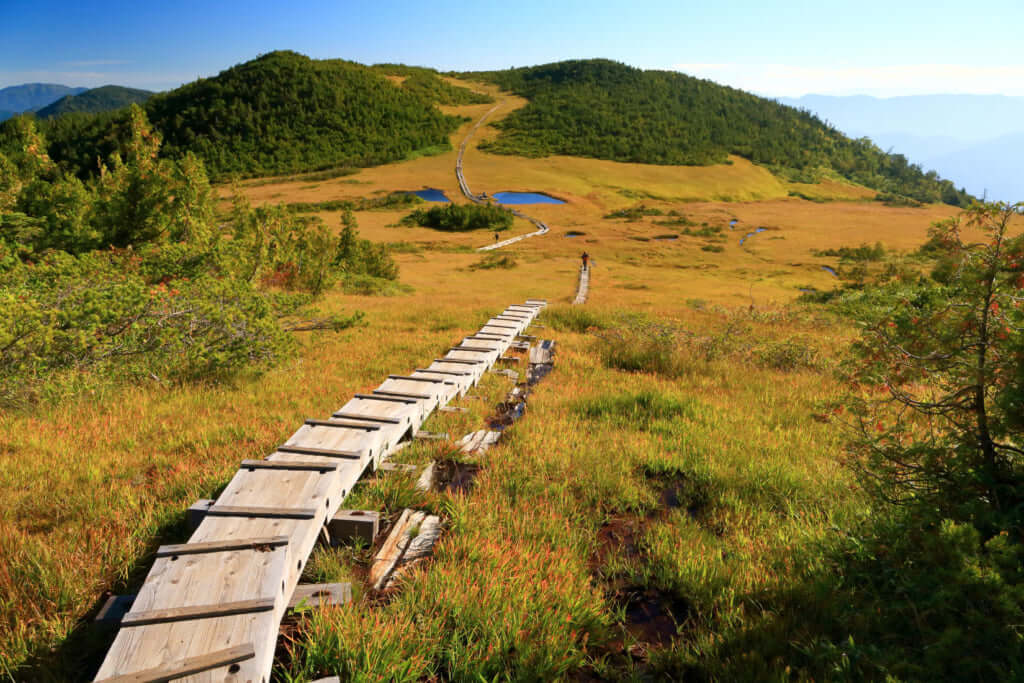Oze National Park, a Gem for Hikers
Situated 150 km north of Tokyo, this park is home to 200 protected species of flowers and animals including the Japanese black bear.

© Wikimedia
Founded in 2007, Oze National Park has already carved out a solid reputation for itself among hiking enthusiasts. Situated where four prefectures meet, namely Gunma, Fukushima, Niigata, and Tochigi, the park attracts walkers and those who are curious to discover the wild, protected nature to which it is home.
Created from lava that ran down from Mount Hiuchigatake over 10,000 years ago, it offers hikers various walks on which they can discover over 200 species of wild flowers, some of which date back to the Ice Age. The park is also known for its mountains covered in white skunk cabbage, which blooms at the end of spring, and its yellow lilies, which open their petals when summer comes. All of this appears before the peaks of Mount Shibutsusan and Mount Hiuchigatake, their summits still covered in snow.
Spend a night in the heart of nature
This reserve that houses rare flora and fauna, protected by the 2005 Ramsar Convention, is also preserved by the creation of wooden walkways, which prevent hikers from crushing the plants under their feet. Thus, there are three main routes running through the park: Hatoma Chitoge, the most popular, which takes walkers up to the Ozegahara marshland, the largest highland marsh in Japan; Oshimizu, a route for experienced hikers due to the incline that leads them to Ozenuma Pond in just two hours; and Fujimishita, the calmest route, which allows walkers to reach the pond and then the marshland through the woods.
Although the park can be easily visited in a day, it is also possible to spend the night there, in one of the many traditional huts that punctuate the hiking trails. To access the park from Tokyo, visitors can simply take a JR train to Numata station, then a bus towards Tokura. Between mid-May and mid-October, the period most conducive to visits, there are three buses running from Tokyo’s Shinjuku to Oze, a journey that takes four hours.
More information about Oze National Park can be found on its preservation fund’s website.

© Wikimedia

© Wikimedia

© Wikimedia

© Wikimedia
TRENDING
-
A House from the Taisho Era Reveals Its Secrets
While visiting an abandoned building, Hamish Campbell discovered photographs the owner had taken of the place in the 1920s.

-
The Taboo-Breaking Erotica of Toshio Saeki
The master of the 1970s Japanese avant-garde reimagined his most iconic artworks for a limited box set with silkscreen artist Fumie Taniyama.

-
With Meisa Fujishiro, Tokyo's Nudes Stand Tall
In the series 'Sketches of Tokyo', the photographer revisits the genre by bringing it face to face with the capital's architecture.

-
Masahisa Fukase's Family Portraits
In his series ‘Family’, the photographer compiles surprising photos in which he questions death, the inescapable.

-
Hajime Sorayama's Futuristic Eroticism
The illustrator is the pioneer for a form of hyperrealism that combines sensuality and technology and depicts sexualised robots.





